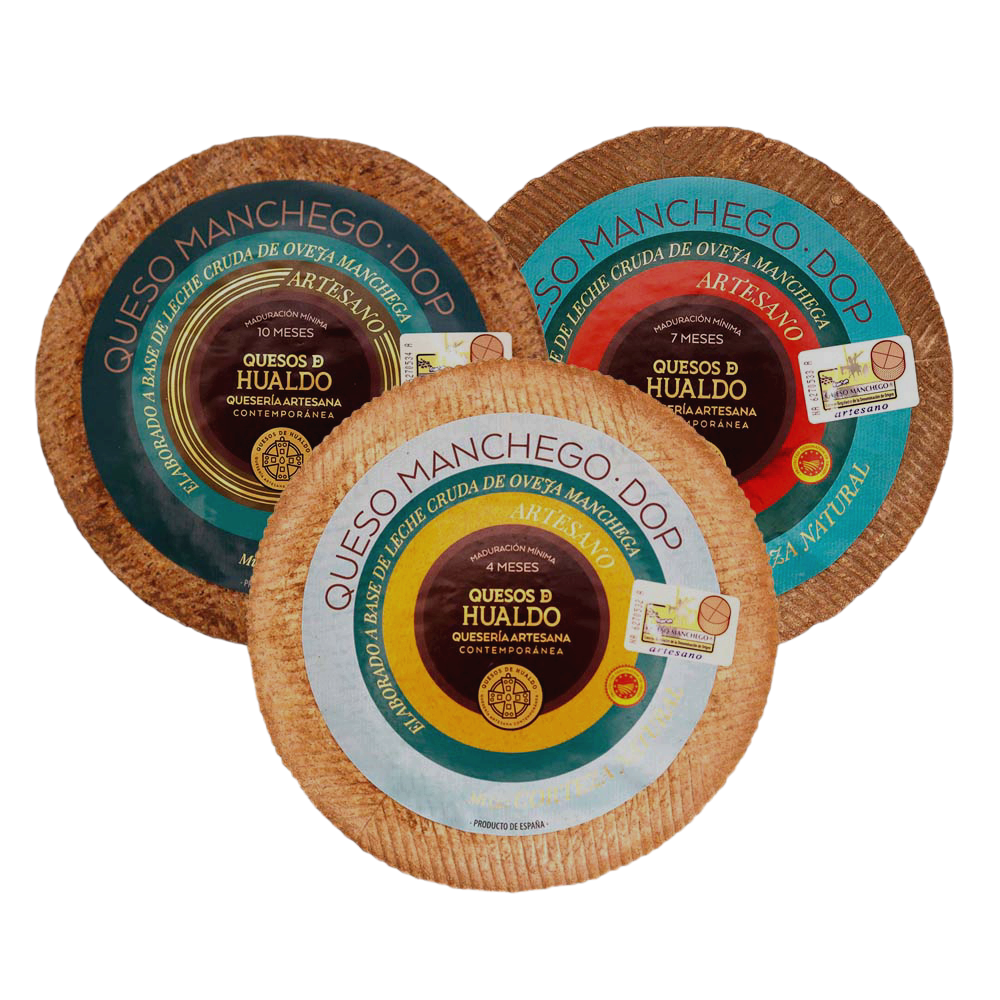Semisoft cheeses are produced by leaving more moisture in the curd grain at the time of draining. This causes the biochemical reactions to occur more rapidly and intensely during ripening, resulting in cheeses whose textures get broken and softened. The appearance of the cheese varies: Cheeses with washed rind are predominantly orange in colour, caused by the bacterium Brevibacterium linnens; cheeses with mouldy rind are bluish-green in colour, due to a strong growth of colonies of Penicillium roqueforti. The interior of both varieties is unctuous and some of them lack of holes. Vegetal flavours are more pronounced in washed rinds and moist earth in mouldy rinds. Our semi-soft cheeses have a lactic flavour like fermented butter, with vegetal, fruity and clean animal notes. Spiced finish. Aftertaste: hay, mould and nuts.

Semi-soft paste cheese (with washed rind and bloomy rind)

Manchego cheese P.D.O. (Ripening: 4, 7 and 10 months)
Cheese made in a traditional way as marked by the specifications of the P.D.O. Queso Manchego. It is formed in a mold that leaves the drawing of the belt printed on the rind of each piece. Throughout its maturation, it is turned and brushed to obtain optimum organoleptic qualities.
It has a cylindrical shape and flat faces. The paste is ivory in color and has small, well distributed eyes. Its smell is lactic, with hints of cereal and fungal notes. The texture is firm and buttery.

Semi-cooked paste cheese (Ripening: 4, 7 and 10 months)
This cheese has a slightly elastic texture. In appearance, it is a cheese with a natural brushed rind reminiscent of traditional Swiss cheeses. The inside shows ochre tones, due to the Maillard reaction that takes place when the milk is heated to temperatures above 40ºC. It has few eyes and its texture is elastic. Aromas of butter, bakery or pastry are typical of these cheeses. The toffee flavour increases with maturation.






